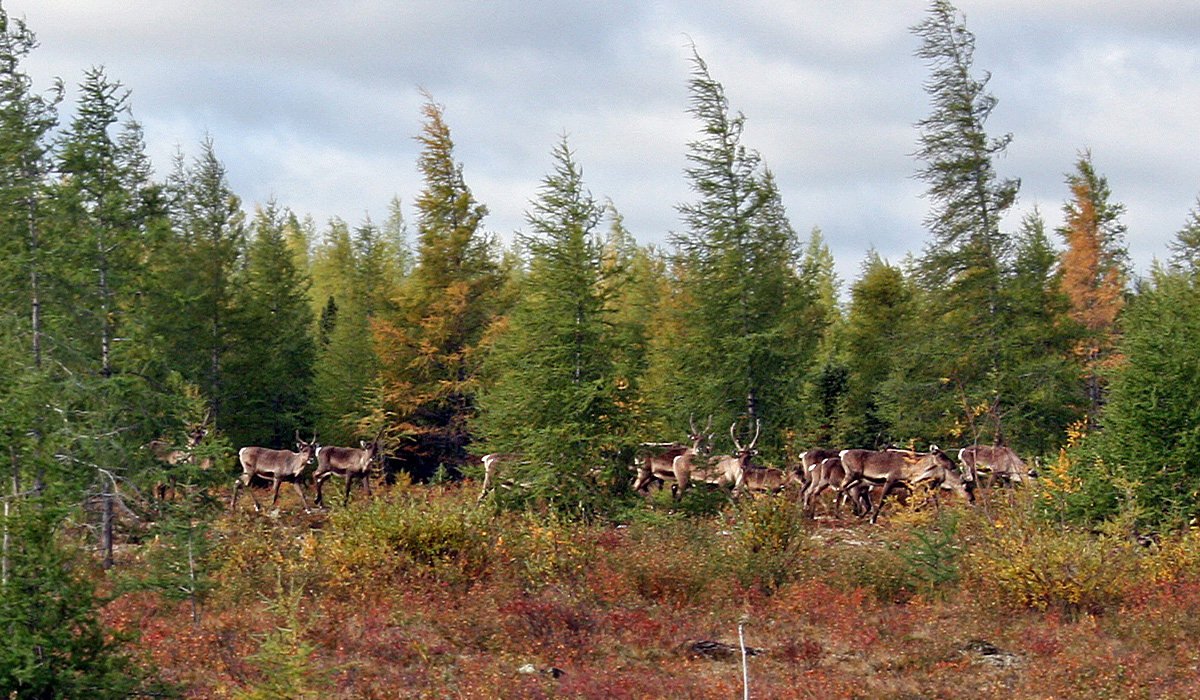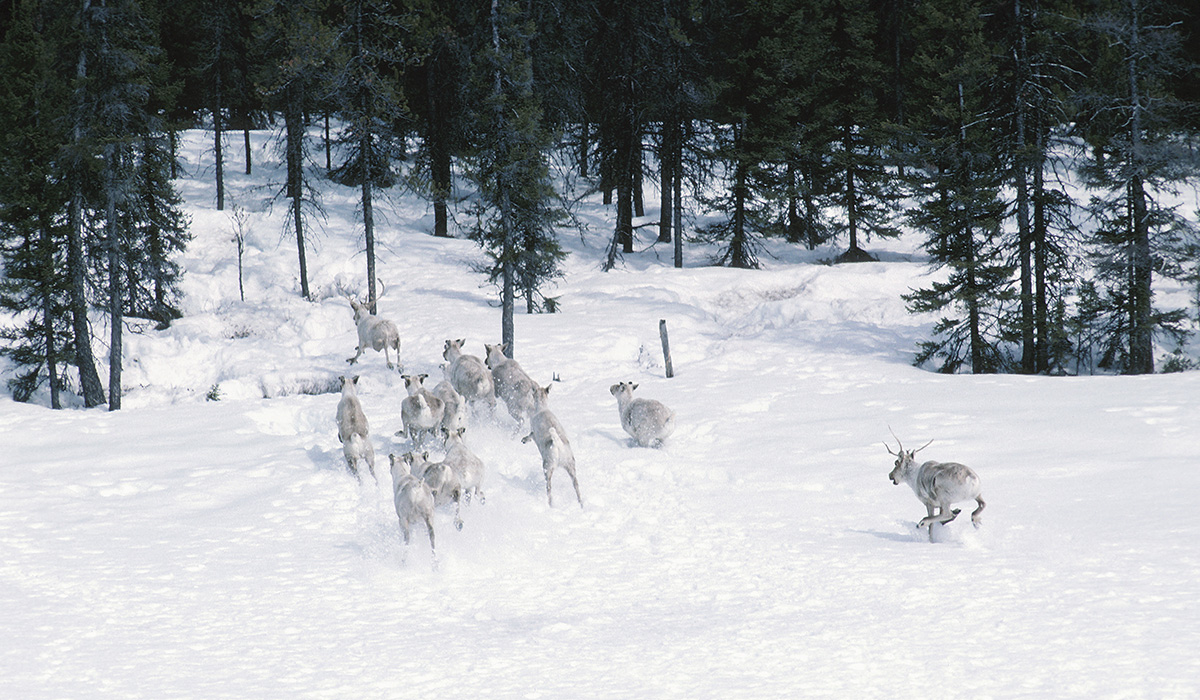Caribou Herds and Ranges
Status of the Herds
The Beverly Herd – The results of the most recent Beverly herd calving ground survey, conducted in June 2023, indicate a statistically significant increase in its population.
Government of Nunavut Department of Environment (GN-DOE) survey data showed a rise in the Beverly herd’s population estimate from 103,400 in 2018 to 152,000 in 2023.
The Beverly herd has been in decline since the 1990s. The last Beverly herd calving ground survey conducted by the GN in 2018 showed the herd had decreased significantly since 2011, from about 136,600 to about 103,400 animals.
The BQCMB also conducted a vulnerability assessment for the herd in November 2017, and re-affirmed those results based on the 2018 population estimate. The Board rated the Beverly herd’s overall vulnerability level as ‘high’.
For more information, read “Beverly caribou herd at high risk of continued decline.”
Another vulnerability assessment of the herd is planned for 2026.
The Qamanirjuaq Herd – In 2017 the Qamanirjuaq herd was estimated to be about 288,000, down from about 344,000 in 2008, and 496,000 in 1994. The most recent survey of the herd, conducted in June 2022, estimates the current size of the herd to be about 253,000 animals – approximately half as many caribou as there were 22 years earlier.
The BQCMB conducted a vulnerability assessment on the Qamanirjuaq herd in 2015/16, and rated the herd’s vulnerability as ‘medium-high’.
For more information, read “Qamanirjuaq caribou herd at medium to high risk of continued decline.”
Although the latest Qamanirjuaq survey results point to a continued slow decline of the herd, it is showing signs of stabilizing.
The BQCMB will conduct another vulnerability assessment of the Qamanirjuaq herd in 2026.


Habitat and Range
The combined ranges of the Beverly and Qamanirjuaq herds total an area almost as large as the Northwest Territories and two times the size of Saskatchewan!
The historic Beverly and Qamanirjuaq winter ranges overlap, mainly in southeastern NWT and northeastern Saskatchewan. During the rest of the year the herds are usually apart, with the Qamanirjuaq herd mainly in the southern Kivalliq region of Nunavut along and inland from Hudson Bay, and the Beverly herd using range in NWT and Nunavut to the west and northwest of Qamanirjuaq range.